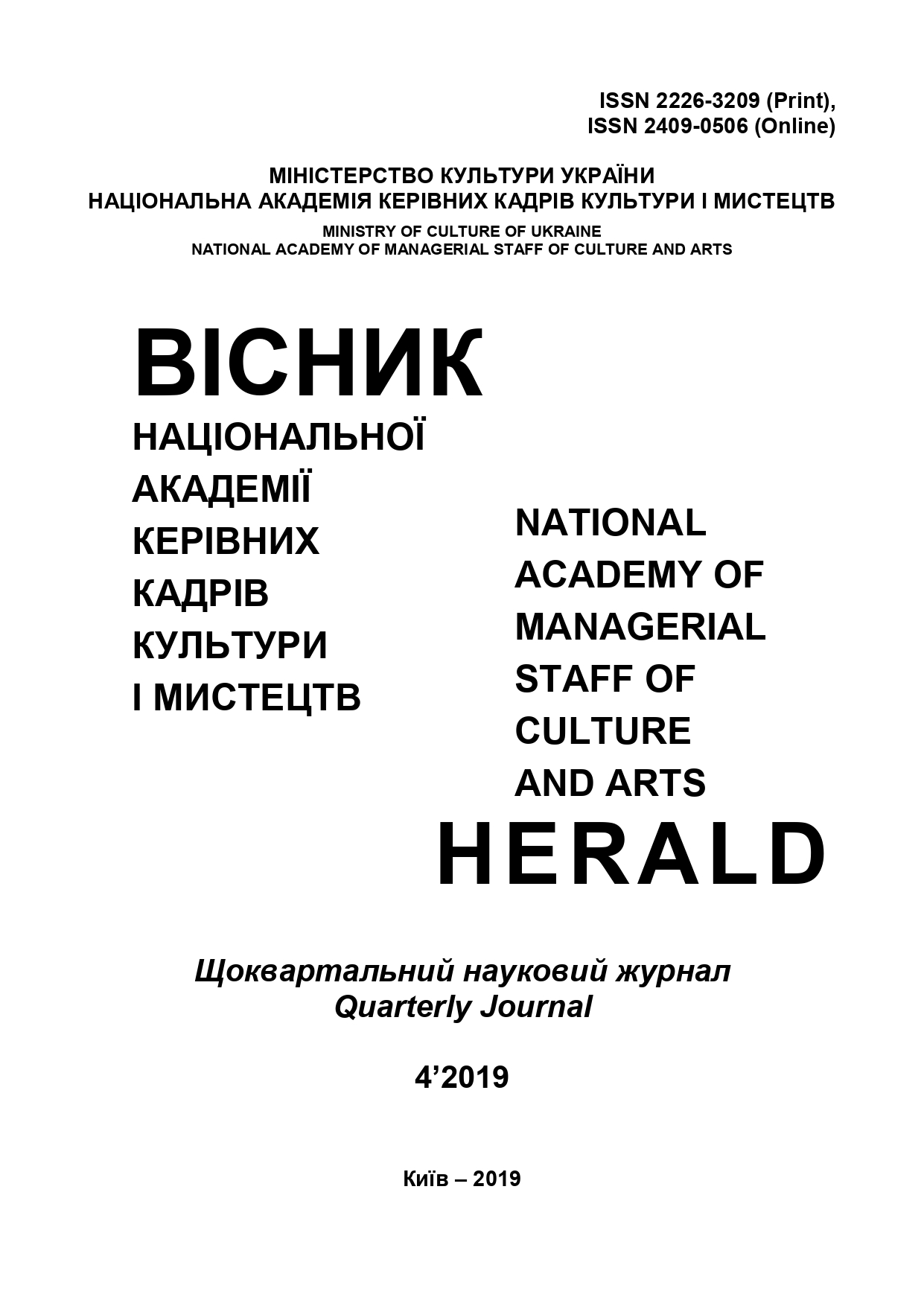Особливості зображення Свято-Іллінської церкви в Суботові у роботах художників
Features of the image of the Church of St. Elyinsky in the Subotov in the works of artists
Author(s): Irina Solarska-KomarchukSubject(s): Christian Theology and Religion, Visual Arts, Recent History (1900 till today), 18th Century, 19th Century, Sociology of Art, History of Art
Published by: Національна академія керівних кадрів культури і мистецтв
Keywords: temple; baroque; image; engraving; watercolor;
Summary/Abstract: The purpose of the article. The aim of the work is the analysis of the features of the image of the Ilinsky church. Sabbaths in the paintings of foreign and domestic artists of the XVIII - early XX centuries. Methodology. The research methodology is based on the use of art history, cultural, and biographical approaches to the analysis of the works of artists who, with their image of the Elijah Church, focused on its cultural and artistic uniqueness. Scientific Novelty. The scientific novelty consists of revealing the interpretation using the art of artistic, historical, and cultural value of the St. Elias Church as an important monument to the B. Khmelnitsky residence. Based on the consideration of works by artists A. Osipov, T. Shevchenko, K. Przhichihovsky, S. Vasilkovsky, and ethnographer de la Fliz, the architectural accuracy of the monument (the primary appearance, the absence of author’s conjectures) is found out, which is an essential factor for restoration and restoration works of art and cultural studies. Conclusions. The analysis of works of art dedicated to the Bogdanov temple in the Sabbotov shows that the engraving by A. Osipov and the watercolor by T. Shevchenko most accurately convey the original appearance of the building. Besides, they demonstrate the particular style of this architectural monument, which was formed based on rethinking the local traditions of temple construction under the influence of Western European baroque, as well as the defense needs of the time. Thus, as a monument to the hetman of Bohdan Khmelnytsky, the Church of the Elias has attracted artists and historians since the late 18th century. The tragic fate of the Ukrainian helmsman not only aroused interest in this temple but also determined the mood of transmission of this monument. Of particular interest are the works of O. Osipov and T. Shevchenko, since the accuracy of the image was the goal in both cases. I want to emphasize that due to the historical status of the Temple of Elias, not only did the magnificent engravings and watercolors appear but also began, without end, the formation of unique architectural stylistics, which was fixed in the works of painting. After all, even in the face of constant hostilities, Ukrainian hetmans XVII-XVIII centuries tried to decorate their residences with architecture worthy of a European city. This is perhaps why the wandering European artists did not leave the Church of Elijah without their attention.
Journal: Вісник Національної академії керівних кадрів культури і мистецтв
- Issue Year: 2019
- Issue No: 4
- Page Range: 142-147
- Page Count: 6
- Language: Ukrainian

